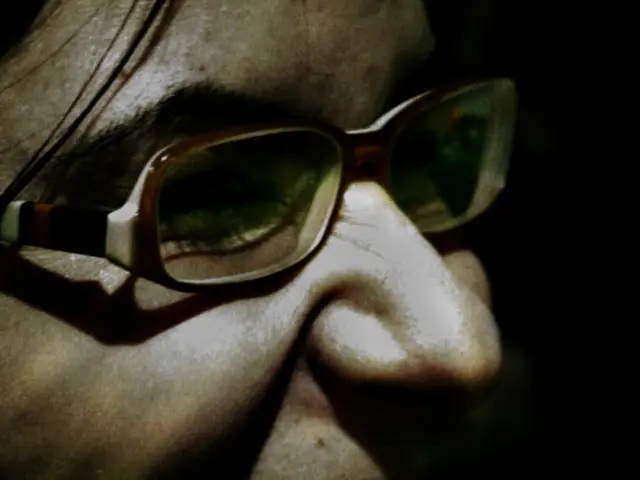"Blue Light: Your Ally or Nemesis?"
The Prevalence of Blue Light and Its Potential Impact on Your Wellbeing
In today's digital age, blue light has become an inescapable component of our lives. From our smartphones to our TVs, and even the lights in our homes, blue light is casting its presence upon us virtually 24/7. But how did this wavelength of light become so pervasive, and what exactly does it do to our bodies? Let's delve into the science, examine its pros and cons, and discover practical solutions to thrive alongside this constant luminosity.
What is Blue Light and Why Does it Matter?
Blue light is part of the visible light spectrum with short wavelengths and high energy, ranging from 400-495 nanometers. It is naturally produced by the sun, contributing to the regulation of our circadian rhythms (internal body clocks) and enhancing our mood and alertness during the day.
However, concern arises when artificial sources of blue light, like digital screens and energy-efficient lighting, expose us to high levels of this wavelength beyond natural bounds. This perpetual exposure can disrupt our biological processes and affect our overall well-being.
"Screens: Our Gateway to Blue Light"
Technology's ascension has drastically escalated blue light exposure. According to a 2021 study by Statista, the average adult spends more than seven hours daily gazing into screens. Smartphones, laptops, and tablets are significant offenders, emitting substantial blue light directly into our eyes.
Curiously, blue light isn't confined to screens – it's also a key element in LED lighting, which has become the norm for energy efficiency. While environmentally friendly, LEDs emit higher levels of blue light compared to traditional incandescent bulbs.
The Science of Blue Light and Your Eyes
"Eyes Not Engineered for This."
One of the primary health concerns linked to blue light is its impact on our eyes. Unlike UV rays, blue light infiltrates the retina directly, potentially causing damage over time.
A landmark 2018 study published in Scientific Reports suggests that prolonged blue light exposure may lead to retinal stress, increasing the risk of conditions like macular degeneration. Although this doesn't mean your smartphone will cause blindness, the long-term effects could be significant as we age.
Symptoms of excessive blue light exposure:
- Eye strain
- Dryness or irritation
- Blurred vision
- Headaches
Blue Light and Sleep: The Unseen Disrupter
"Why your phone is keeping you awake."
Blue light's capacity to mimic daylight can be both a boon and a bane. During the day, it helps keep us alert and productive. But after sunset, it suppresses melatonin production, the hormone that aids sleep.
Research from a 2017 study at Harvard indicates that just two hours of evening blue light exposure can delay sleep onset by up to 90 minutes. This disruption in circadian rhythm has been linked to an array of health problems, including:
- Insomnia
- Increased stress levels
- Greater risk of obesity and heart disease
Does Blue Light Only Have Downsides?
"Every villain has its heroic moments."
It's crucial to acknowledge that blue light isn't inherently malicious. Without it, our bodies wouldn't function optimally. Blue light therapy is commonly used to treat conditions such as Seasonal Affective Disorder (SAD), a type of depression that arises during winter months when daylight is limited.
Furthermore, studies show that controlled blue light exposure can:
- Improve alertness and cognitive performance during the day
- Boost mood by stimulating serotonin production
The key is achieving a balance – obtaining the right amount of blue light at the right times.
Safeguarding Yourself Without Going Dark
"Balance the light, master your world."
Completely shunning blue light is neither practical nor necessary. Instead, incorporating preventative strategies can help limit its adverse effects:
- Adhere to the 20-20-20 Rule: Every 20 minutes, focus on an object 20 feet away for 20 seconds. This lessens eye strain.
- Invest in Blue Light Blocking Glasses: Numerous studies, including one published in Investigative Ophthalmology & Visual Science, confirm that these glasses can significantly reduce eye discomfort.
- Enable Night Shift Modes: Most devices now offer "night shift" settings, which reduce blue light emission in the evening.
- Limit Screen Time Before Bed: Experts recommend avoiding screens at least one hour before sleep.
- Optimize Lighting at Home: Choose warmer lightbulbs for spaces where you unwind, such as bedrooms and living rooms.
Blue Light's Future: The Lighthouse in the Storm
"Are we bound to blue light forever?"
As acknowledgment grows, inventors are finding ways to cut back on blue light emissions without compromising screen brightness or energy efficiency. Innovations in OLED technology and blue light filtering layers may pave the way for a healthier relationship with artificial light.
Moreover, information about healthy screen habits is becoming more widespread, empowering individuals to take the reins of their light exposure.
Final Thoughts
Blue light is omnipresent – and it's not going away. While it plays a vital role in our daily lives, excessive exposure can have profound consequences for our health. By understanding the science and implementing simple protective measures, we can bask in the benefits of blue light without sacrificing our well-being.
"Fear not the light; learn to coexist with it."
- In the realm of mental health, the prolonged exposure to blue light and disrupted sleep patterns can lead to increased stress levels, potentially contributing to anxiety and depression.
- Eye health, particularly in the context of medical-conditions, is adversely affected by blue light. Research suggests that repeated exposure can lead to retinal stress and increase the risk of retinal damage over time, which may exacerbate conditions like macular degeneration.
- Despite its potential negative effects, blue light also plays a crucial role in health and wellness, as it can boost mood by stimulating serotonin production during the day. Additionally, blue light therapy has been used to treat conditions like Seasonal Affective Disorder (SAD), which is largely caused by a lack of sunlight during winter months.








